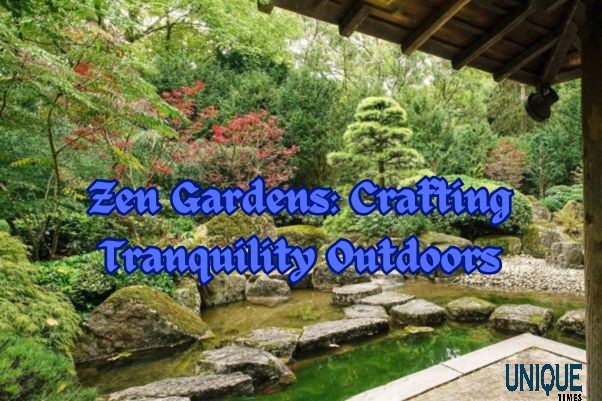In a world bustling with noise and constant movement, the allure of Japanese gardens lies in their ability to evoke a sense of calm and serenity. Rooted in ancient traditions, these gardens are a testament to the art of harmonizing natural elements. Let’s explore the Zen philosophy behind Japanese gardens and discover how you can bring tranquility to your outdoor space.
1. Embrace Simplicity: Japanese gardens are renowned for their minimalist design. Embrace simplicity by selecting a few key elements for your garden, such as carefully chosen rocks, gravel, and a water feature. Less clutter allows for a more profound connection with nature.
2. Balance and Symmetry: Achieving balance is crucial in Japanese garden design. Create a sense of equilibrium by placing elements symmetrically, ensuring that no single feature dominates the landscape. This balance promotes a feeling of tranquility and order.
3. Zen Elements: Incorporate traditional Zen elements, such as raked gravel or sand, into your garden design. These elements not only add aesthetic appeal but also serve as a medium for mindfulness. Raking patterns can symbolize waves or ripples, enhancing the meditative atmosphere.
4. Water Features: Water is a central theme in Japanese gardens, representing purity and life. Integrate a carefully placed pond, stream, or waterfall to bring the soothing sound of flowing water to your space. The reflections on the water’s surface add an extra layer of visual serenity.
5. Pruned Elegance: Maintain a sense of order by carefully pruning and shaping plants. Bonsai trees, carefully manicured shrubs, and sculpted pines are common in Japanese gardens. This meticulous approach not only enhances the visual appeal but also reflects a reverence for nature.
6. Symbolism with Stones: Incorporate stones strategically, considering their size, shape, and placement. Stones can represent mountains, islands, or even animals, adding layers of meaning to your garden. Thoughtful arrangement invites contemplation and connection with the natural world.
7. Seating for Contemplation: Provide a quiet space for contemplation with well-placed seating. Traditional Japanese gardens often feature stone or wooden benches strategically positioned to offer peaceful views. A comfortable spot encourages moments of reflection and mindfulness.
Creating Your Tranquil Haven: By integrating these principles into your outdoor space, you can cultivate a Japanese-inspired garden that transcends mere aesthetics. It becomes a sanctuary—a place where the delicate balance of nature and design fosters tranquility, inviting you to slow down and appreciate the beauty that surrounds you. Explore the Zen of Japanese gardens and embark on a journey to create your haven of serenity.
Picture Courtesy: Google/images are subject to copyright









